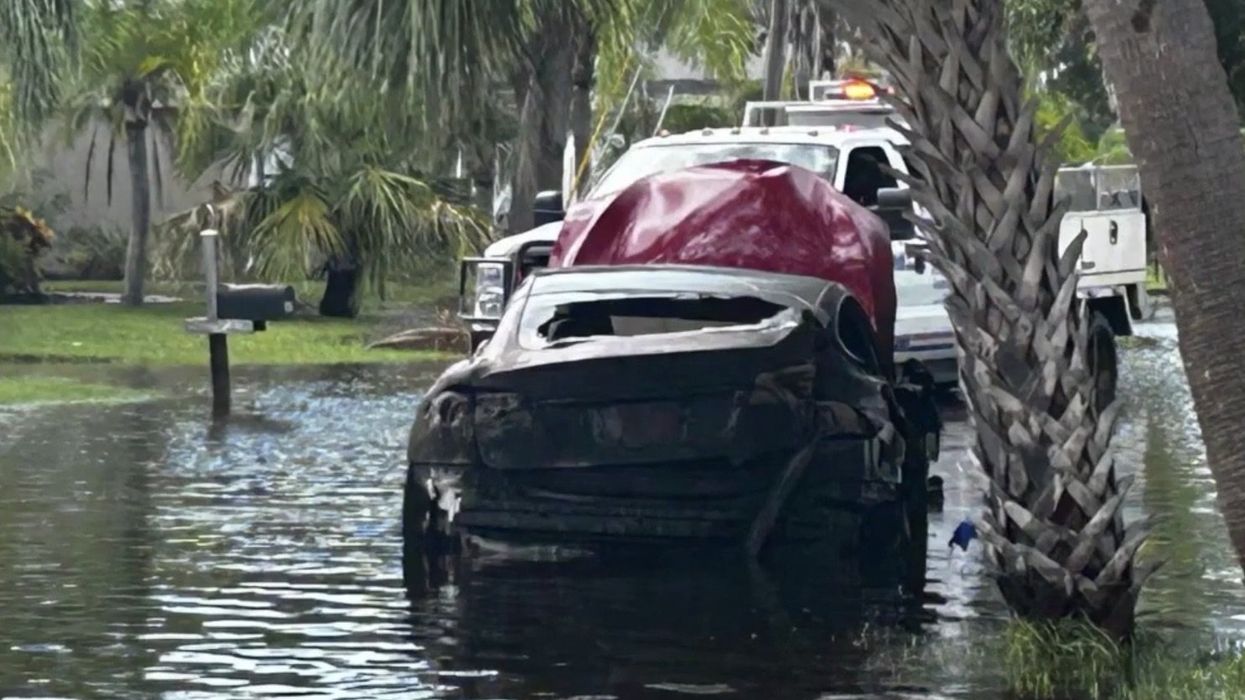
Image source: WTVT-TV screenshot

At least two Floridians who own electric vehicles learned last week what happens when salt water corrupts their vehicle's battery system.
After Hurricane Idalia battered the Big Bend region of the Sunshine State, at least two electric vehicles — both of them Teslas — caught fire after they were submerged in seawater.
The incidents led local firefighters to warn residents against keeping their EVs, or any electric-powered set of wheels, inside or near a structure.
"If you own a hybrid or electric vehicle that has come into contact with saltwater due to recent flooding within the last 24 hours, it is crucial to relocate the vehicle from your garage without delay. Saltwater exposure can trigger combustion in lithium-ion batteries," the Palm Harbor Fire Rescue advised in a social media post.
The threat, according to Carfax spokesperson Patrick Olsen, comes when the floodwaters recede and the mineral deposits from the salt water dry on the battery.
"The salt water that is flooding can get into the battery and dry there, and once it dries, it creates what federal safety officials call bridges between cells, and that can lead to fires, and that those fires can come anywhere from days to weeks later," Olsen explained. "And once an EV catches on fire, it is incredibly difficult to put it out."
According to the U.S. Fire Administration, ignition of EV batteries corrupted by seawater can take days or even weeks after the initial exposure. The fires also release harmful chemicals and are difficult to suppress.
Last year, at least a dozen EVs burned to the ground in Florida after being submerged in salt water from Hurricane Ian. Two homes, which weathered the storm, burned to the ground because a single corrupted EV stored inside a garage spontaneously combusted.
If your EV is exposed to saltwater flooding, the U.S. Fire Administration recommends moving it at least 50 feet from structures, other vehicles, and combustable materials.
Like Blaze News? Bypass the censors, sign up for our newsletters, and get stories like this direct to your inbox. Sign up here!